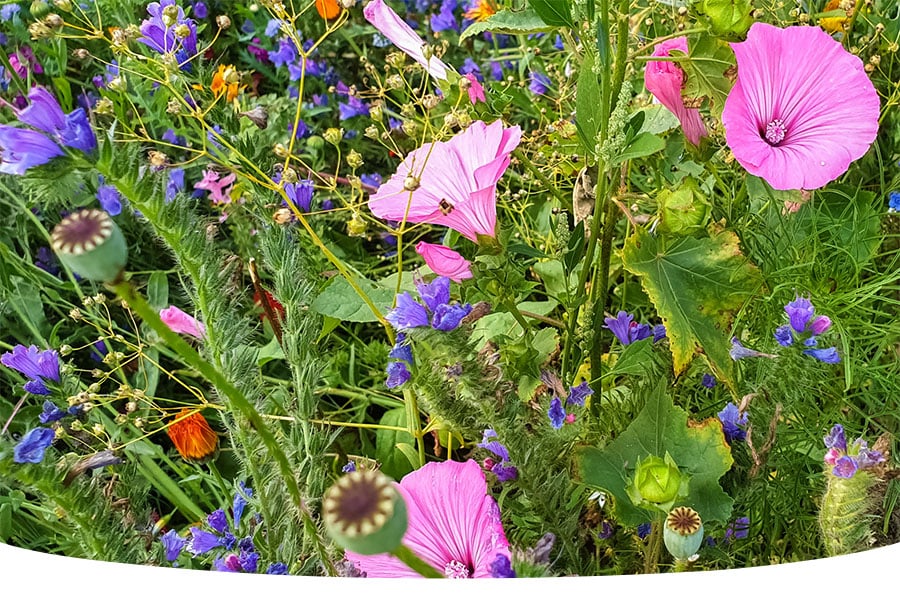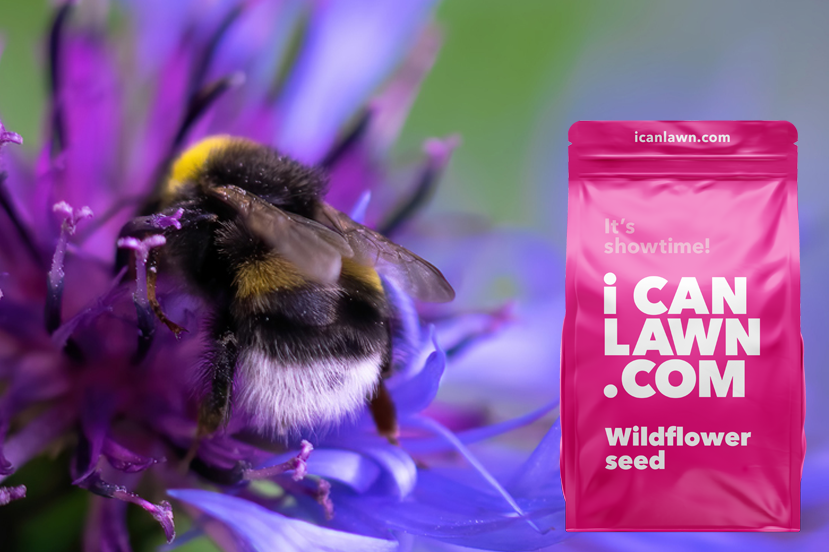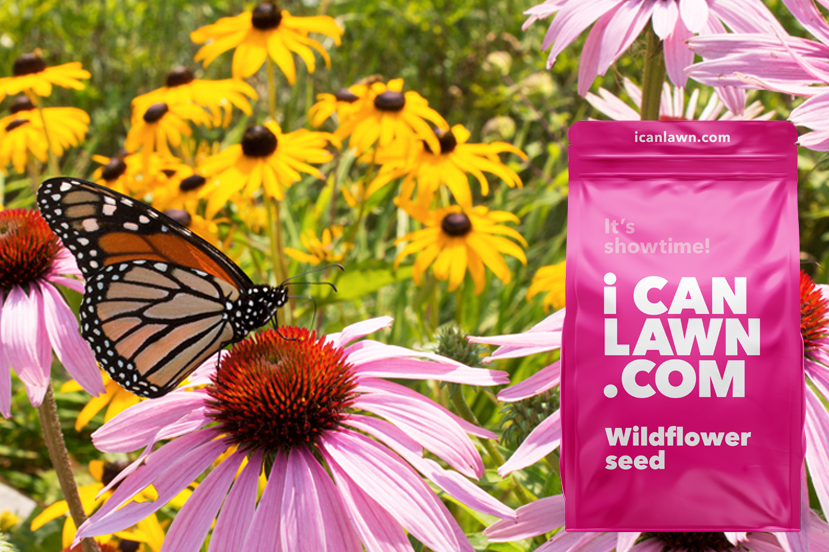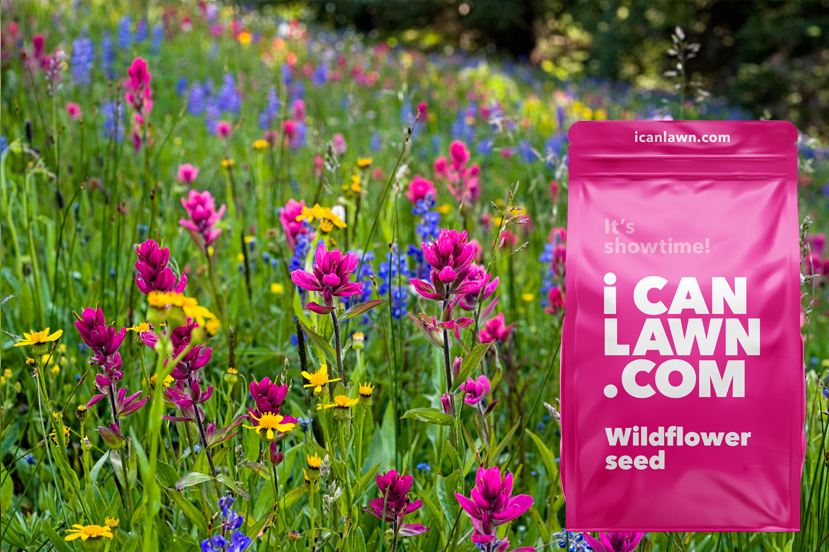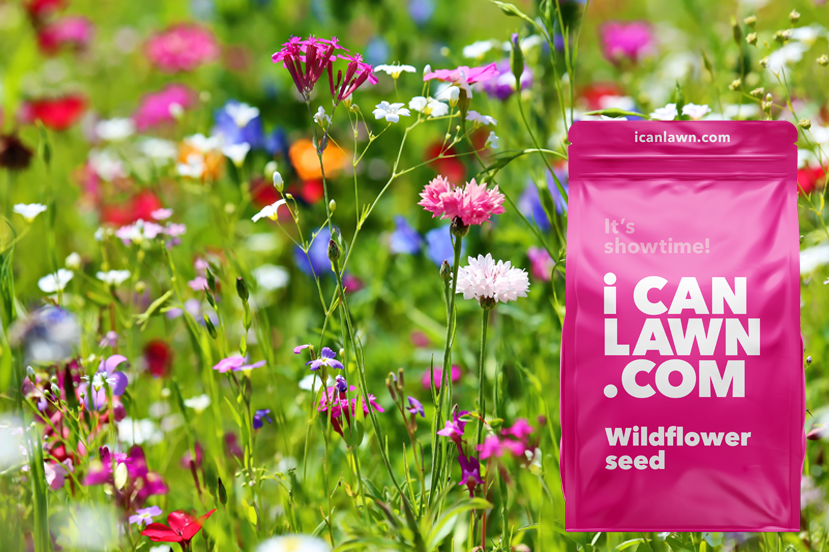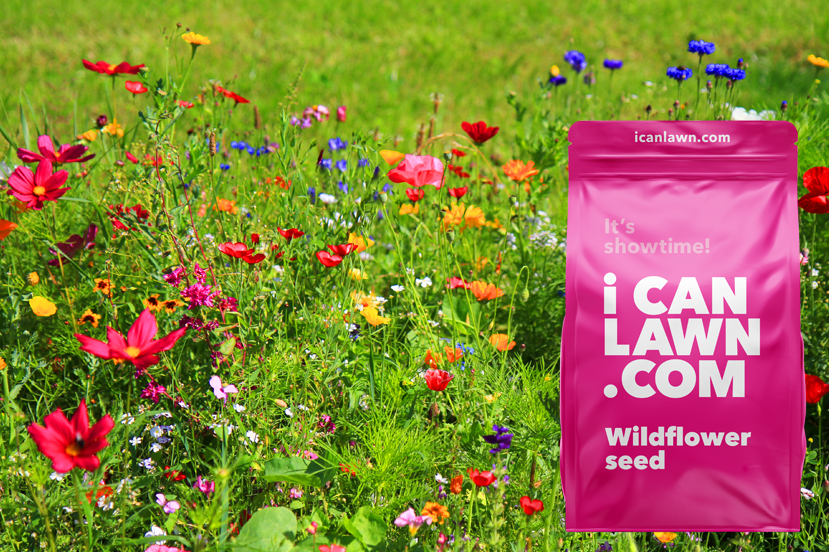Tips for planting wildflower seeds
Wildflowers have this amazing ability to fill gardens with vibrant colours and a natural charm that’s hard to resist. Whether you want to create a stunning flowerbed or help out the local ecosystem, planting wildflower seeds is both satisfying and good for the environment. Growing wildflowers doesn’t just attract pollinators and support ecosystems; it also lets you get up close and personal with the wonders of nature. Here are some great tips to help you successfully plant wildflower seeds and create a thriving paradise in your garden!
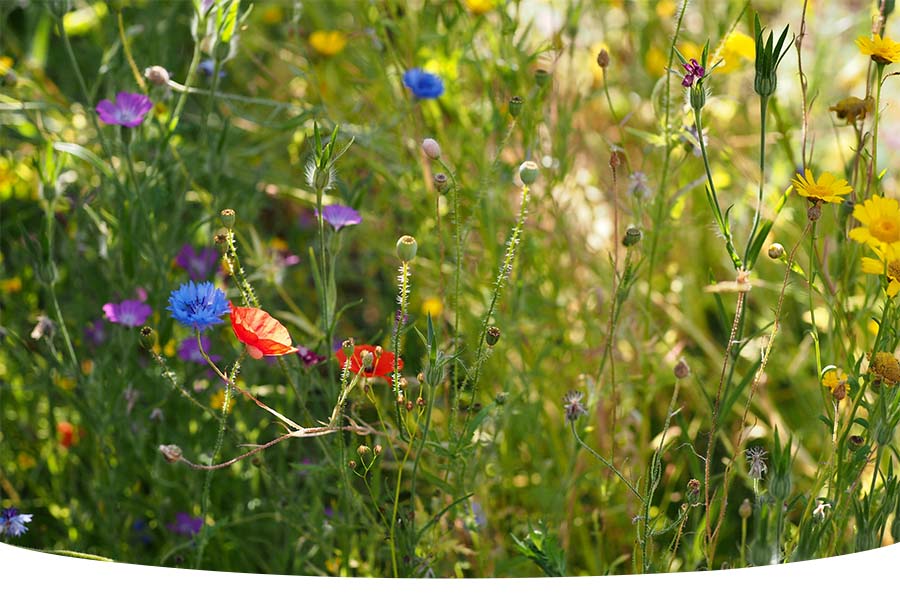
Tip 1: Find the Perfect Spot for Planting Wildflower Seeds
Even though most wildflower seeds will grow almost anywhere, there are a few things to consider before you begin planting them. For example, if you’re planting wildflower seeds in a shaded area of your garden, then using our Shade Showcase seed mix will provide the best results. And if you’re planting wildflower seeds in clay soils, then our Clay Display wildflowers will give you the vibrant blooms you’re hoping for!
Tip 2: Prepare your seedbed to perfection
Before putting your wildflower seeds in the ground, prepare the soil for them. You can do this by clearing away any plants, weeds, or flora from the spot where you want to plant. Then, use a rake or garden fork to break up the soil and get rid of rocks and stones. This helps the soil breathe and drain properly, creating the perfect seedbed for your new wildflower seeds.
Tip 3: Pick the right seeds for your needs
Choosing the right wildflower seeds for your garden is important if you want a burst of beautiful colours and shapes. Our wildflower seed mixes are designed to thrive in the UK environment, and they’re easy to take care of after you plant them. All you need to do is decide what wildflower mix you want to see in your garden!
Tip 4: Take time to plant your wildflower seeds properly
There are a few steps involved in planting wildflower seeds, but the process is easy if you follow these general steps for successful wildflower planting!
Can you just throw wildflower seeds to plant them?
A common question we often get asked is, “Can you just throw wildflower seeds?” and the answer to this question is yes! We recommend sowing wildflower seeds at a rate of 5 grams per metre squared (5g per m2) for the best results. We have more advice in our guide on how to sow wildflower seeds below:
Can you scatter wildflower seeds on grass?
Another popular question we often read people asking is, “Can you scatter wildflower seeds on grass?”. The answer to this is yes and no. Even though wildflower seeds can be sown on top of existing grass, and some will grow - the competition from the existing lawn makes growing conditions challenging for the new wildflower seedlings. For this reason, and to ensure your wildflowers grow as best they can, we recommend you prepare the seedbed correctly for the best results.
To give your new wildflower seeds the best chance at growing (regardless of whether you are sowing over an existing lawn or not), you must rake/scarify the area as much as possible by using a scarifying or tine rake. Then follow the steps below for scattering your wildflower seeds:
Step 1: Spread the Seeds:
Take a handful of seeds and scatter them evenly over the soil, about 5 grams for every square meter. Walk slowly and wave your hand to spread the seeds out, covering the whole planting area without crowding them.
Step 2: Rake the Seeds:
After spreading the seeds, gently rake the soil with a garden rake and press the seeds into the ground with your feet. This helps the seeds make good contact with the soil, which they need to start growing. Don’t rake too hard, though, or you might bury the seeds too deep.
Step 3: Water and Take Care of Your Seeds After Sowing
After planting your wildflower seeds, water them regularly for the first six weeks, especially if there’s no rain showing on the weather forecast! Keep the soil damp until your wildflower seedlings are established. You can do this using a gentle spray of water from a hose or a sprinkler to avoid moving the seeds around. Once the wildflowers are growing well, you don’t need to water them unless you’re having a really dry spell.
After six weeks, you can let the natural weather patterns take care of the watering for you!
Tip 5: Keep Weeds in Check
Wildflowers are pretty resilient against pests and diseases, but sometimes weeds will try to take over. Keep an eye on your planting area and pull out any weeds that pop up before they compete with the wildflowers. And when your wildflowers are growing strong, the weeds won't have much of a chance to grow again.
Tip 6: Sit Back and Enjoy the Beauty of Your New Wildflower Meadow
Watch as your wildflowers grow and bloom, and take some time to enjoy their beauty and positive effect on the environment. You’ll see all sorts of wildlife coming into your garden, like bees, butterflies, and birds. Don’t forget to save your wildflower seeds at the end of the season once they’ve gone to seedhead, then collect the seeds for planting for the following year.
Planting Wildflower Seeds
Planting wildflower seeds is an easy and eco-friendly way to add natural beauty to your surroundings. Follow these steps, and you’ll be well on your way to creating a thriving wildflower haven that makes your outdoor space look amazing and helps protect local ecosystems. As you nurture your wildflower paradise, take a moment to appreciate the diversity and wonder of nature’s masterpiece.
- We have a helpful guide on how to sow wildflower seeds, which goes into detail on every step along the way.
- Our How to Hub takes you through the pleasant journey of planting wildflower seeds, from choosing your seed mix to maintaining your wildflower meadow.





